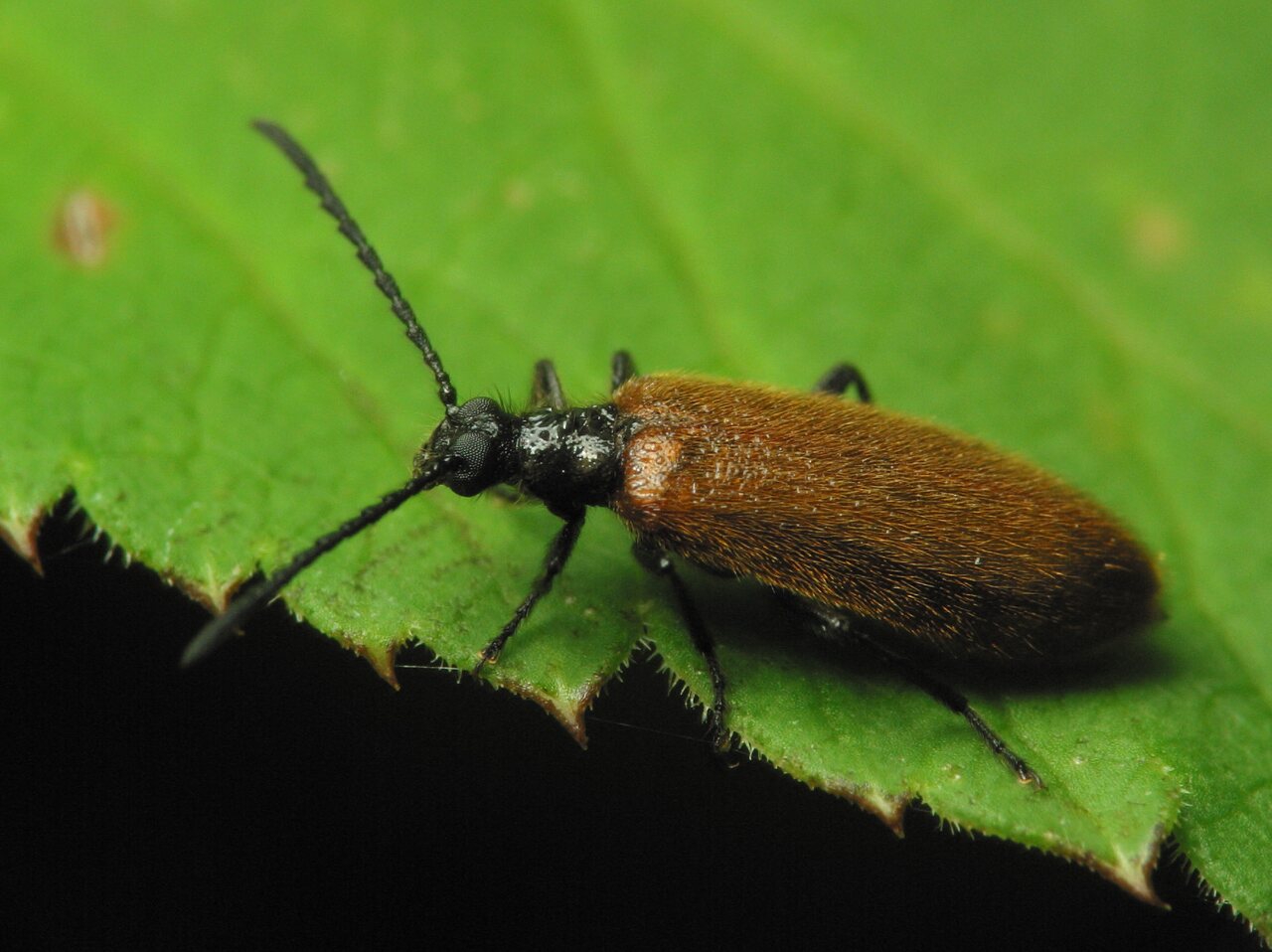
Lagria hirta male · paprastasis gauravabalis ♂
- rough-haired Lagria beetle
- Gemeine Wollkäfer
- paprastasis gauravabalis
- pūkainā sarvabole
- omięk
This species is present in Europe, North Africa, Western and Eastern Siberia, Central Asia. The fully formed beetles can be seen from late May to September. The adult beetles feed on nectar and pollen. Females lay the eggs in the soil where they hatch after about eight days. The larvae live in the humus where they feed on decaying vegetables. After having overwintered larvae pupate in early summer of the next year and a new generation of beetles will then develop.
Lagria hirta can reach a length of 7–8 mm. These beetles have a soft and elongated body and a head and thorax brown or shiny black. The relatively elongated elytra are yellowish-brown and covered by dense fine light yellowish-brown hairs. The rest of the body is also hairy, but they are less clearly visible. Antennae, underside of body and legs are black. The eyes are remarkably large and round. Antennae are composed with eleven segments.
The elytra of the females are more extended backward than in the males and the female's abdomen looks from above wider than in the males. The male, in addition to its slimmer body, is distinguished from the females by their larger eyes and by the length of the last segment of the antennae, which is nearly twice the corresponding segment in the female. The hind wings are transparent.
Lagriinae, formerly Lagriidae, Cucujidae
‥
0 comments
Add a comment